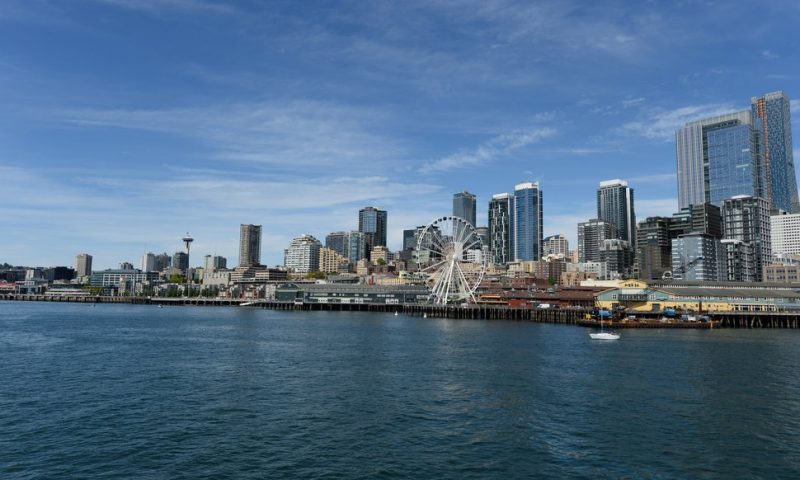The earthquake early warning system, called ShakeAlert, now spans the West Coast.
Washington residents may gain valuable seconds before an earthquake strikes going forward, as a new warning system went live on Tuesday.
The Evergreen State joined Oregon and California in instituting the ShakeAlert system – completing a 15-year project to equip the most earthquake-prone region in the U.S. with an early warning system that now spans the West Coast. The mobile alert system, operated by the U.S. Geological Survey in cooperation with the Pacific Northwest Seismic Network, went live in Washington on Tuesday morning, and now offers public alerts to 50 million people across the three states.
“We all know an earthquake could strike at any time,” Gov. Jay Inslee said in a statement earlier this year. “An Earthquake Early Warning system could provide the critical time needed for Washingtonians to drop, cover and hold on. It has the potential to save lives and reduce damage to critical infrastructure.”
Implemented in California in 2019, and arriving in Oregon in March, the system allows individuals to receive cellphone alerts powered by ShakeAlert seconds before they feel the ground shake, although it depends on their proximity to the epicenter of the earthquake.
“If it’s a nearby earthquake around Seattle, you might get five or 10 seconds of warning,” says John Vidale, a professor of earth sciences at the University of Southern California and a member of the ShakeAlert advisory board. “If it’s a big earthquake on the coast, like the magnitude 9 we worry about, there are ways people might get 30 seconds or even a minute of warning because the earthquake waves have to travel farther.”
“But it’s no more than minutes and in nearby earthquakes, it would just be a couple of seconds.”
The big earthquake that experts and some residents in the Pacific Northwest worry about would fall along the Cascadia Subduction Zone, a fault situated off of the coast that runs 600 miles from British Columbia down to Northern California. Experts have determined the interval at which earthquakes occur within the fault, and according to the Pacific Northwest Seismic Network, the next major earthquake along the fault “could strike the PNW at any time or still be hundreds of years away.”
But even if an earthquake of such magnitude struck, mere seconds may be more valuable than they sound.
“It turns out you can do quite a bit with a few seconds,” Vidale says. “You know, obviously you’re not getting people out of town or something, but a good fraction of the injuries in earthquakes come from people running or having things fall on them, and so if you can give them just a heads-up alert of what’s happening and a few seconds to just shift over to a safer position, the estimates are that might save anywhere (from) 10% to 50% of the damages and injury in the earthquake.”
A major part of the earthquake warning system’s value is in what can be done automatically. For example, if the system sends out a warning, trains will automatically slow to a stop, bridges could stop to traffic, and elevator doors could open on the nearest floor, preventing significant damage and making it easier to recover after an earthquake, Vidale says.
In Washington, those with Android phones have ShakeAlert integrated into their operating system, and an alert will be delivered automatically. For those with other phones, the Wireless Emergency Alerts system, used for other occurrences such as flood warnings or Amber Alerts, will be employed, and users will receive alerts if their emergency alerts and their device location settings are enabled. In California and Oregon, cellphone users can download an app.

